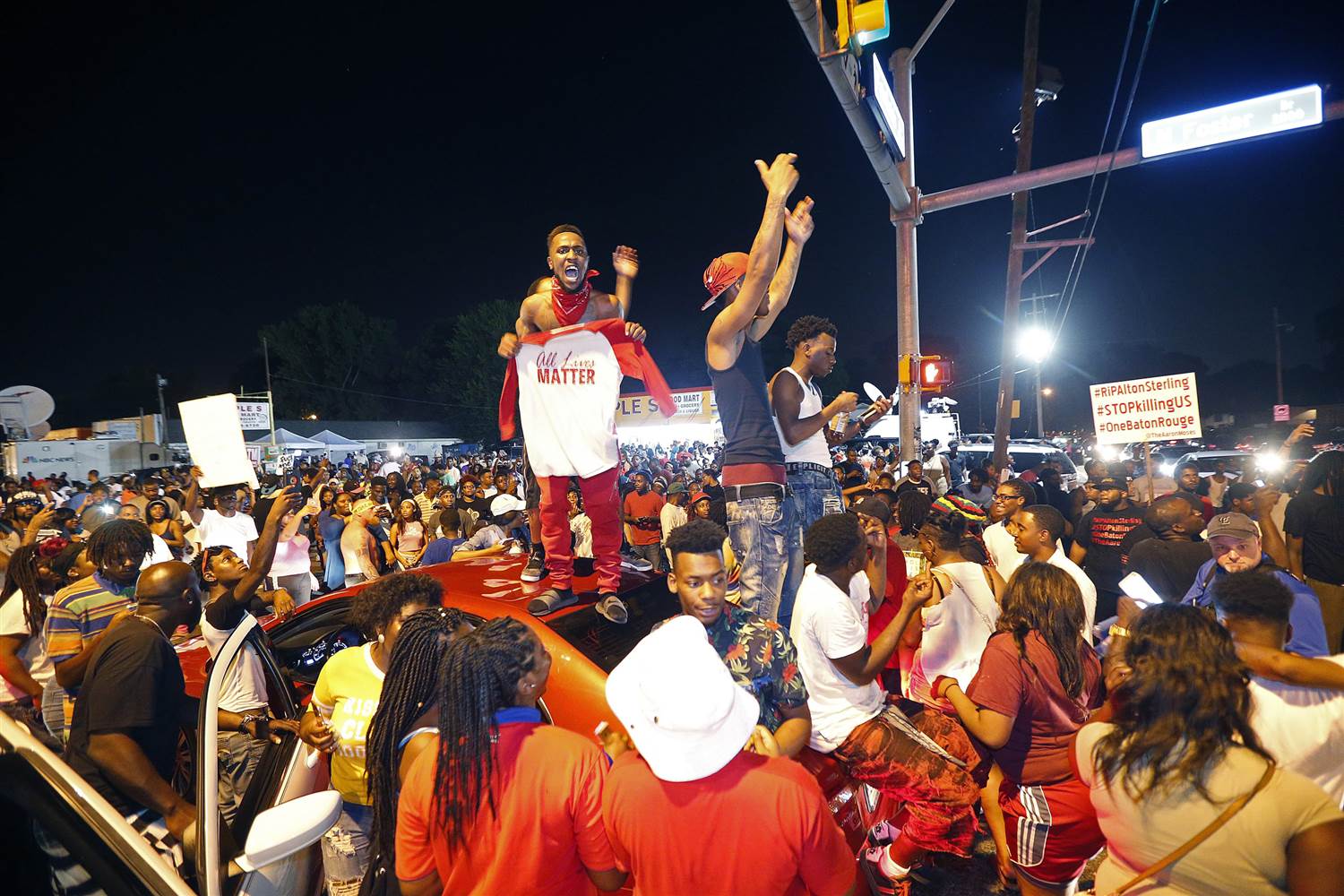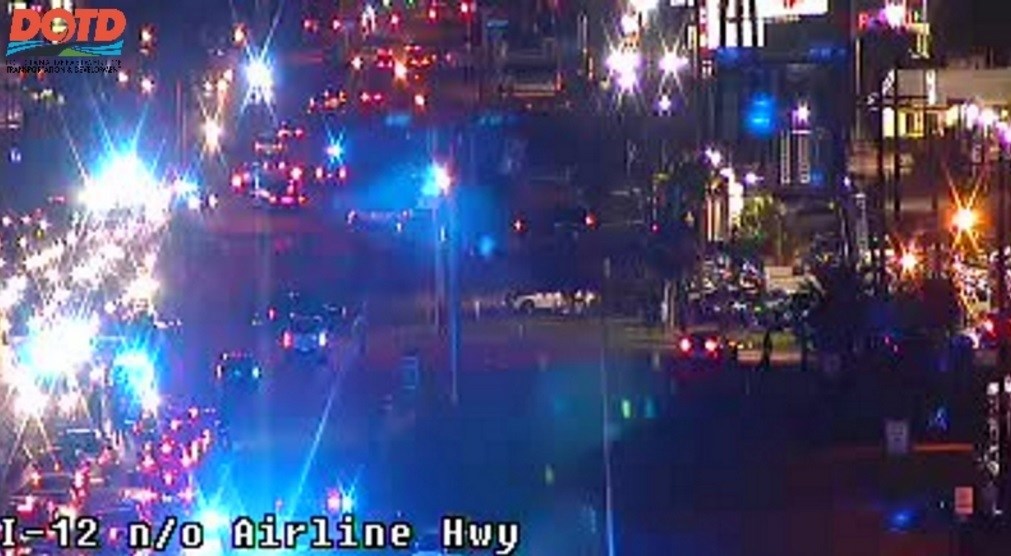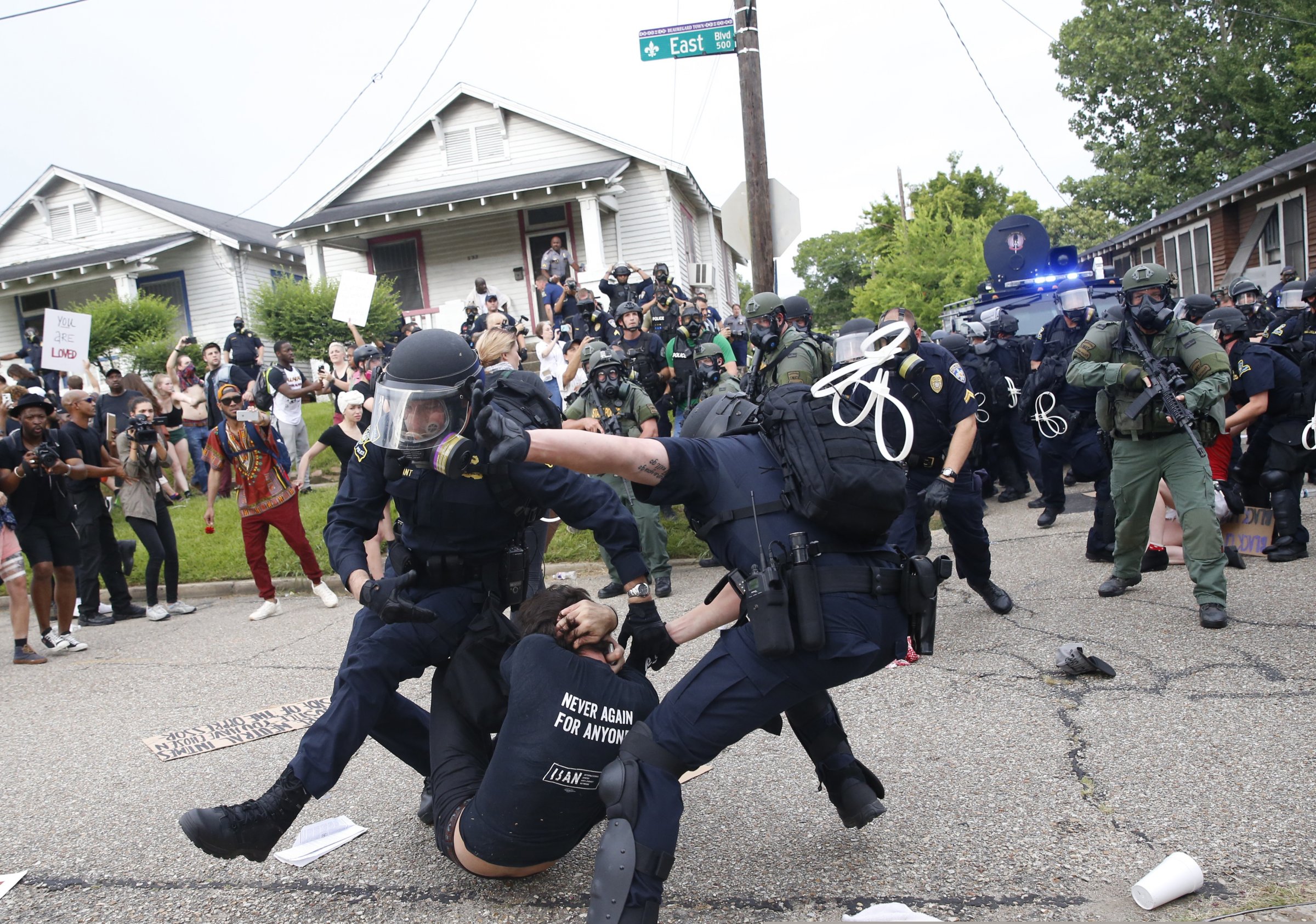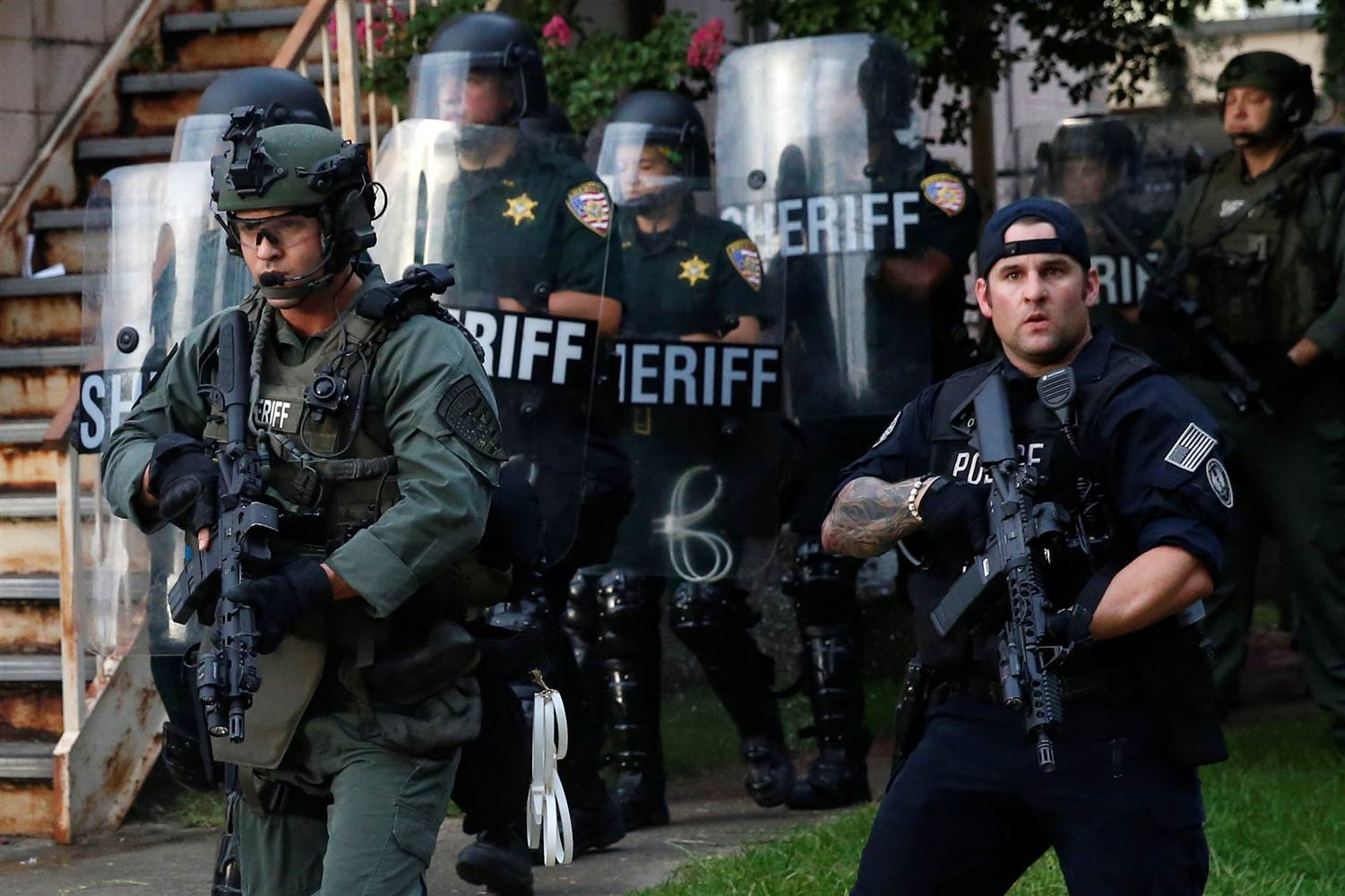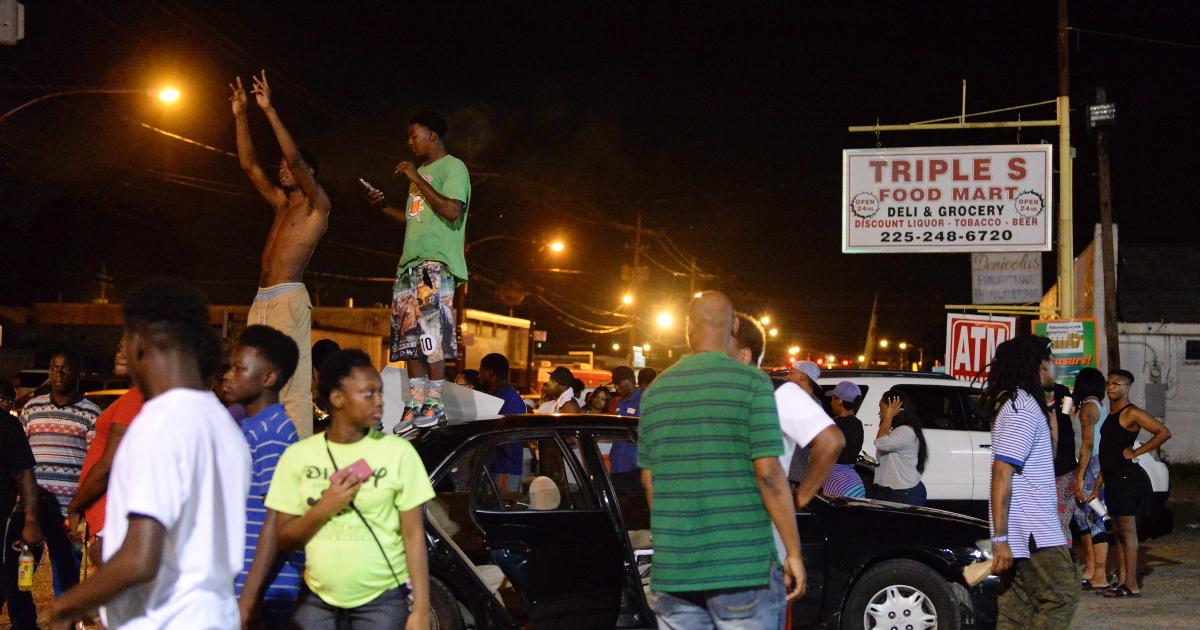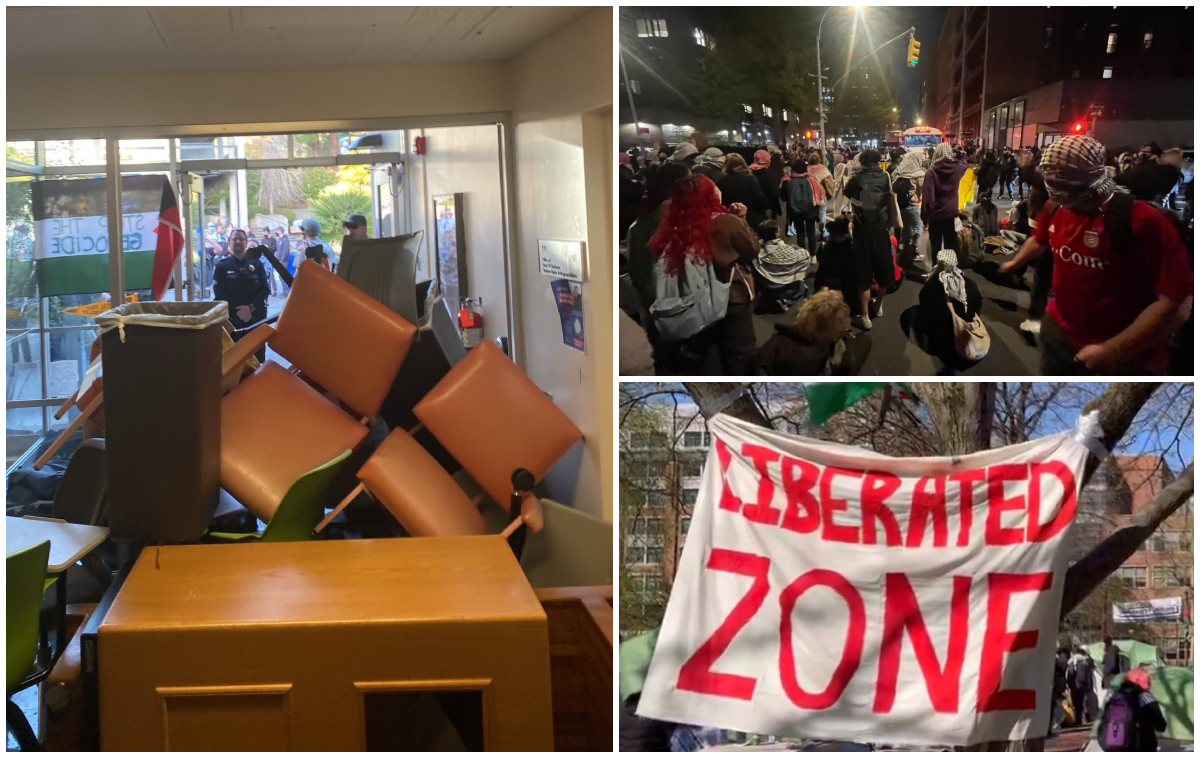Filed under: Interviews, Police, Repression, Southeast, White Supremacy
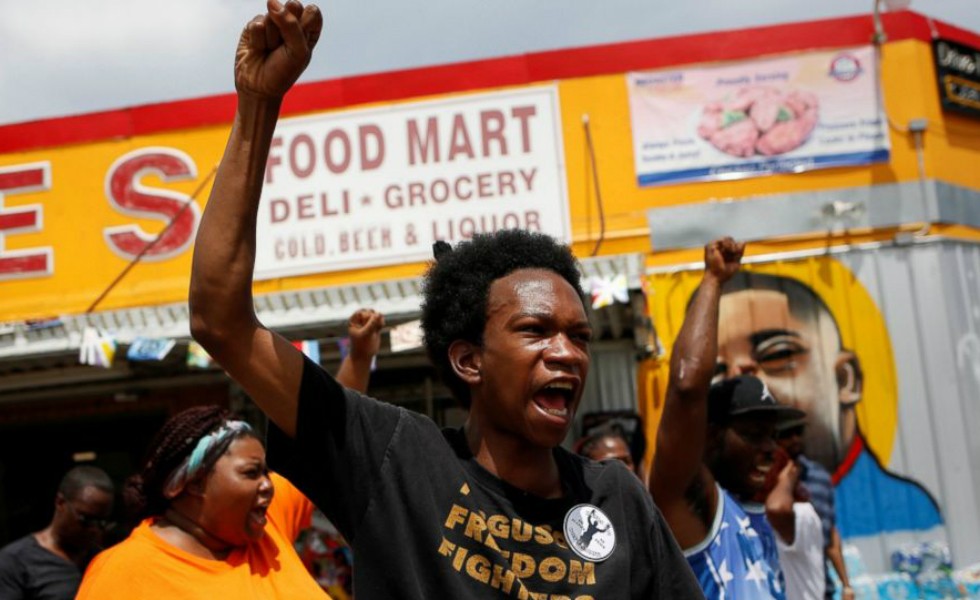
Submitted to It’s Going Down
On July 5, police in Baton Rouge shot and killed Alton Sterling in the parking lot of the Triple S convenience store. For many nights after there were sizable gatherings at the site and marches and clashes with the police. What follows is an interview with someone that was there.
When did you first go to Baton Rouge, what was the vibe, and what was your reading of the situation and composition of the crowd?
I first went to Baton Rouge that Thursday, two nights after Alton was killed. At that point the rallies were still in their first phase, a kind of block-party outside of the Triple S. At times there were about a thousand people attending these rallies, which would run late into the night. It definitely helped that the owner of the Triple S was very sympathetic to what was going on, as were several other nearby businesses.
The mood at these gatherings was tinged with anger and rowdiness, but with respect to the environment, which was a black, low-income neighborhood. Fireworks were lit. Cars peeled out in the intersection. Graffiti and anti-police memorials for Alton went up. Hometown-hero Lil Boosie’s anthem Fuck the Police could usually be heard coming from somewhere.
During the first few nights the police were nowhere to be seen. By the time I’d arrived it was dawning on lots of people that the cops were playing a kind of containment strategy; by being in a friendly neighborhood the crowd’s mood was tempered, that is so long as the cops didn’t make an appearance, a sacrifice they were more than willing to make until things cooled down.
Alton Sterling
On July 10th there was another major protest, leading to this widely circulated image, as well as multiple confrontations with police and instances of excessive force. Were you in Baton Rouge then and if so what can you tell us?
Before talking about Sunday July 10th, it’s worth mentioning that the day before was a much more conflictual situation in which almost twice as many people were arrested. That Saturday was when protest tactics shifted from hanging near the Triple S to rallying outside the BPD First District Police Station and marching down Airline Highway in an attempt to block Interstate 12.
Saturday’s march to I-12 was the first big march of the weekend. Unlike Sunday it was not well-promoted on social media, nor was it sanctioned by the police. There also weren’t many out-of-towners or professional activists, which might explain the lack of attention it received on social media. There were a few activist groups, however, though mostly the more militant-type. The Revolutionary Communist Party was there hawking their endless supply of papers. There was also the New Black Panther Party, decked out with their fatigues and shotguns, making the police uneasy.
By all accounts the cops totally reversed their approach on this march, driving their SWAT tanks into the crowds and, with AR-15’s drawn, tackling and arresting as many people as they could.
That night hundreds of people gathered at the Circle K across from the police precinct. Dozens more people were arrested as riot cops repeatedly lined up and rushed the crowd, targeting those who were more outspoken. That said almost everyone’s charges from both Saturday and Sunday have since been dropped.
To get back to your question, the protest on Sunday was very interesting, although probably not in the way the community leaders, police and city officials who organized it intended. The day’s events began with a sanctioned march to the capitol, followed by a rally. Nearly two thousand people came — probably the largest anti-racist march or rally in Louisiana since the Jena Six rally in 2008.
After the rally left the capitol, and once there was no more programming left to hold people’s attention, hundreds of people defied the peace marshals’ orders to remain on the sidewalk, moving instead to take Interstate 12. About a block from the on-ramp is when the confrontation in the videos and photos took place. Blocked from the interstate by tanks and riot cops, people tried instead to hold an intersection. This was complicated by the number of self-appointed leaders frantically telling the crowd to get on the sidewalk and be peaceful. These folks had a demoralizing and panicky effect on the crowd, contributing to how easy it was for the police to pick people off.
In general, the movement was most vibrant when crowds were working together to overcome a clearly-defined obstacle — whether it was blocking an interstate, defending a parking lot, or keeping the riot police-lines at bay. Sometimes this process was complicated by arguments about the “right way to protest,” but after dark this was rarely a problem as many ideologues wouldn’t come out past a certain hour. Seemingly our capacity for action continued to grow insofar as crowds were open to unorthodox methods, while still paying attention to the more practical concerns. During these moments of creativity and courage our line of questioning might’ve been posed as: what is most practical and possible at a given moment; what is going to increase our power in relation to the cops’.
Finally, on July 17, a Missouri man Gavin Long shot and killed 3 cops in Baton Rouge. Did this mark the end of the events there? Has the flooding in Louisiana since then had any overlap or intersection with the Sterling protests that you know of?
Gavin Long’s action has definitely changed the atmosphere in Baton Rouge. As capitol of Louisiana, Baton Rouge and the neighboring parishes are home to a lot of the state’s most racist populations whose sentiments played a big part in passing America’s first Blue Lives Matter Bill back in May, which makes targeting police a hate crime.
Nearly half of the BRPD itself is manned by residents of neighboring Livingston Parish, an overwhelmingly white area known in the recent past for KKK activity. Even the cops who actually live in Baton Rouge Parish are mostly from the white neighborhoods. Very few police have any ties to North Baton Rouge (the site of the protests), aside from the larger economic interest they have in maintaining an atmosphere of terror there.
Given this context, Long’s attack has no doubt entrenched the police and their sympathizers, who’ve already seized upon the opportunity to amp up the pro-police pageantry and repress any counter-narrative.
As for the flooding, this intersects with everything else that’s happened in Louisiana, but in ways I have trouble speaking to, partially because it’s so recent and my knowledge of Baton Rouge is pretty limited, but also because the full implication of everything that’s happened in Baton Rouge this summer is so tremendous.
What I do know is that there are people who stepped up during the protests who are now stepping up to provide relief for those who got flooded. A lot of this involves facilitating the transfer of volunteers and resources to effected areas without having to go through the inefficient bureaucracy of some of these relief organizations, such as Red Cross.
Curfews due to flooding have also been imposed, and there are rumors that this is being used as an excuse to lock up people in North Baton Rouge. That said Livingston Parish was one of the worst flooded areas, so who knows, maybe the police who hail from that area are finally learning what it feels like to be totally screwed over by forces beyond their control.
In a broader sense, it’s also worth noting that in quick secession, a large American population just experienced firsthand three of the most paradigmatic phenomena of our times: an anti-police uprising, a mass-shooting, and a climate-related catastrophe. Taken together we have a neat diorama of the existential disaster capitalism has thrown us into. For those of us actively looking for a line of flight from this catastrophe — especially in the South — the events unfolding in Baton Rouge are very instructive.


